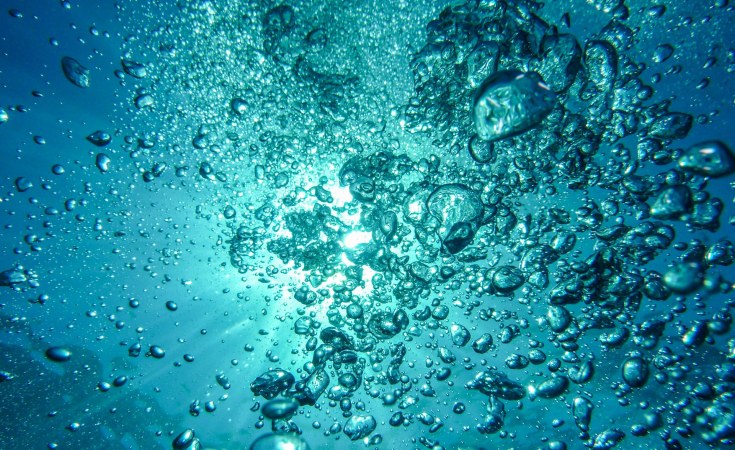South Africa's marine realm is globally unique because of the two major ocean currents that meet here. The cold, slow-moving Benguela and the warm, fast-flowing Agulhas currents create a special environment that supports high levels of biodiversity. Over 13,000 marine species are currently known to live in these waters. About 30% of these are endemic, meaning they occur nowhere else.
Biodiversity metrics (the number or abundance of species) are dominated by invertebrates such as sponges, bivalves and crustaceans. These are usually small, which makes them adaptable and versatile. In terms of numbers, invertebrates make up a vast majority of marine life.
I have been involved in marine biodiversity research for the last 10 years and have worked with teams of researchers, biology students and citizen scientists from across the country. I have also been involved in the naming and classification of organisms.
In South Africa, where there is still much to discover, one focus of my work is identifying new species.
Looking at subtle differences and finding similarities in how tiny organisms evolved in different regions is a global effort. In my own work, carried out together with many experts, there are three finds that have been particularly exciting - a "walking sponge" (Suberites ambulodomos), a tiny clam (Brachiomya ducentiunus) and a rare and miniature isopod (Pseudionella pumulaensis).
Long-term efforts to identify new species like these guide effective conservation. They help to ensure that critical habitats are protected.
These three newly described species may seem small and insignificant individually. However, small species make up the foundation of the food chain and play vital roles in nutrient cycling and in promoting biodiversity.
The walking sponge
First, there's Suberites ambulodomos, or the "walking sponge". This animal forms a unique partnership with hermit crabs. It settles on the tiny shell of a very young hermit crab. As the sponge grows it overgrows the shell completely, many hundred times in size and volume.
As a result, the crab - which usually needs to search for a bigger shell as it grows - never outgrows its home. Instead, it carries the sponge with it.
This is the first symbiotic relationship of its kind recorded in South African waters. This hermit-crab associated sponge was described in a collaborative effort by South African researchers at several institutes including the universities of the Western Cape, Johannesburg and Cape Town.
The tiny clam
Next is Brachiomya ducentiunus, a small clam that lives in the spaces between the spines of a heart urchin. The heart urchin burrows into shallow gravel and spends its life largely hidden, feeding on food fragments trapped in the sand.
This tiny clam highlights the richness of life beyond what is easily visible to the human eye. It was discovered through the 1001 Seaforest Species project, a science and storytelling initiative in Cape Town by the Sea Change Project. It was described and named, meaning scientifically proven to be new, by local researchers from the universities of Stellenbosch and Cape Town, and experts from Santa Barbara Museum of Natural History and the University of Colorado Boulder.
The rare and miniature isopod
Finally, the third new species is Pseudionella pumulaensis. This is a parasitic isopod - a tiny crustacean.
It was discovered in Pumula, KwaZulu-Natal, a region known for its high biodiversity. This isopod has a rather sinister survival strategy: it attaches to the gills of hermit crabs and feeds on their body fluids. Only two specimens have ever been found: a female measuring 2-3 millimetres and an even smaller male, so tiny it was almost missed entirely during the discovery process. I discovered it by chance during my PhD research on hermit crabs, while photographing and zooming in to the smallest details to carry out this work.
Parasites tend to be small and hidden on, or inside, their hosts. They can be overlooked. However, they are vital to understanding biological processes as they regulate populations and are main drivers of evolution.
Pseudionella pumulaensis is the first of its genus in the entire Indian Ocean, a testament to how much more marine life we have yet to uncover. With my local support the isopod was described by an international expert at Hofstra University, New York, and published through the Senckenberg Ocean Species Alliance, a collaborative global initiative to advance marine taxonomy.
Biodiversity knowlege can help save our heritage
The majority of species on Earth remain unidentified. Over 242,000 marine species have been described globally, but the actual number of living ocean species may exceed one million. Many species remain undiscovered, and a large proportion of those already identified are poorly understood. We're now racing against extinction to learn about and from them before it's too late.
There is a lack of funding and job opportunities in discovering new species. In fact, the field of taxonomic expertise may now be as endangered as many of the ecosystems and species it seeks to document.
Read more: Tiny and mysterious: research sheds light on sub-Saharan Africa's seahorses, pipefish and pipehorses
There are no simple, fast-track solutions to the biodiversity crisis - the threat of species extinction combined with vast, unexplored diversity, and the lack of expertise and resources to address this at scale. However, biodiversity initiatives that work collaboratively locally and globally to share expertise offer hope.
Discoveries like these three new species from South Africa emphasise the need for continued exploration. Each species described brings us one step closer to understanding our oceans' rich biodiversity and finding new ways to protect it.
(Tatjana Baleta, a University of Exeter Wikimedia Fellow for Climate at the Global Systems Institute, was instrumental in producing the first draft submission of this article.)
Jannes Landschoff, Research Affiliate, Stellenbosch University


